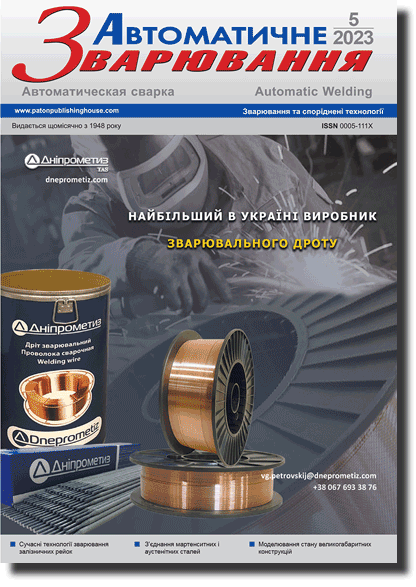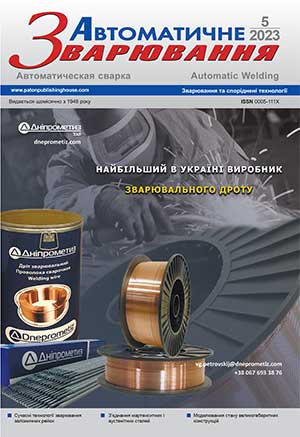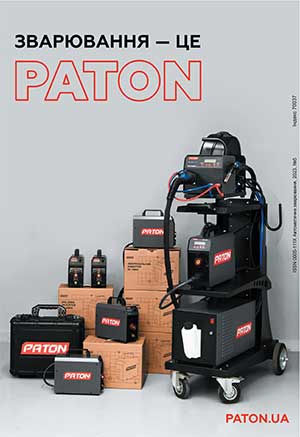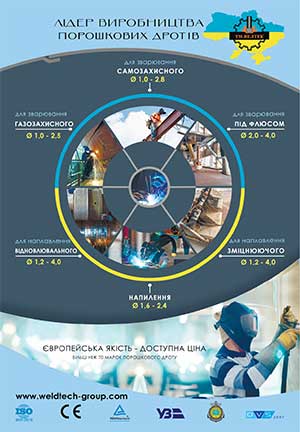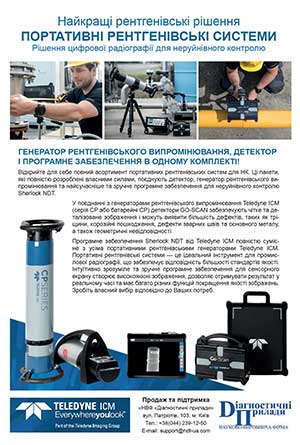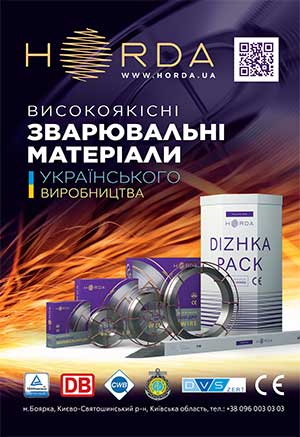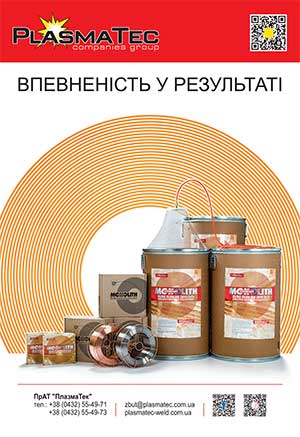| 2023 №05 (01) |
DOI of Article 10.37434/as2023.05.02 |
2023 №05 (03) |
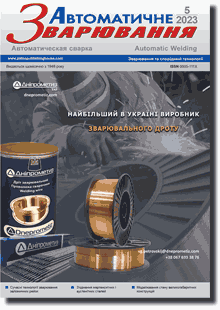
"Avtomatychne Zvaryuvannya" (Automatic Welding), #5, 2023, pp. 18-26
Mechanical properties and structural features of butt joints produced at FSW of aluminium alloys of different alloying systems
A.G. Poklyatskyi1, S.I. Motrunich1, V.Ye. Fedorchuk1, Iu.V. Falchenko1, M. Sagul2
1E.O. Paton Electric Welding Institute of the NAS of Ukraine. 11 Kazymyr Malevych Str., 03150, Kyiv, Ukraine. E-mail: office@paton.kiev.ua2Czech Technical University, 16636, Prague, Czech Republic
The paper presents the results of investigations of the strength, hardness and structure of butt joints on aluminium alloys of different alloying systems, produced by friction stir welding (FSW). It is shown that this process allows producing sound joints of aluminium alloys of different alloying systems, both in similar and dissimilar combinations. This is true not only for aluminium alloys made by casting by the standard technological scheme, but also for granulated alloys, containing the oversaturated solid solution of refractory transition metals, produced by powder metallurgy. It is found that the strength of welded joints produced at FSW of aluminium alloys, depends on the chemical compositions and mechanical properties of these alloys. Maximum ultimate strength is demonstrated by welded joints of the following high-strength alloys: 1995 (483 MPa), 1963 (473 MPa) and D16 (441 MPa), which is due to a slight degree of metal softening in the zone of thermomechanical impact (ZTMI), which is where the samples fail at mechanical stretching. Destruction of samples of welded joints of dissimilar aluminium alloys also runs in this zone or on its boundary with the heat-affected zone (HAZ) from the side of the softer alloy. Their ultimate strength is on the level of the joints of the respective similar alloys. It is shown that intensive plastic deformation of metal at FSW of dissimilar aluminium alloys results in formation of grains of practically globular shape in the weld nugget in the permanent joint zone, their size not exceeding 4 – 6 μm. In granulated alloy welding, the oversaturated solid solution is preserved in the granules, just their mechanical refinement takes place, resulting in a fine dense structure of the weld nugget, and the granules containing an oversaturated solid solution of refractory transition metals are uniformly distributed over the entire volume of the matrix in the weld metal. 12 Ref., 4 Tabl., 8 Fig.
Keywords: aluminium alloys, friction stir welding, hardness, strength, structure
Received: 21.03.2023
References
1. Ishchenko, A.Ya., Labur, T.M. (2013) Welding of modern structures from aluminium alloys. Kyiv, Naukova Dumka [in Russian]. ISBN 978-966-00-1258-5.2. Ishchenko, A.Ya., Labur, T.M., Bernadsky, V.M., Makovetskaya, O.K. (2006) Aluminium and its alloys in modern welded structures. Kyiv, Ekotekhnologiya [in Russian]. ISBN 966-8409-14-0.
3. Beletsky, V.M., Krivov, G.A. (2005) Aluminium alloys (Composition, properties, technology, application. In: Refer. book. Ed. by I.N. Fridlyander. Kyiv, KOMINTEKh. ISBN 966-8550-25-0.
4. Ryabov, V.R., Pavlenko, Yu.V. (1991) Welding of composite materials (Review). The Paton Welding J., 3, 46–56.
5. Ishchenko, A.Ya., Kharchenko, G.K., Falchenko, Yu.V. et al. (2006) Vacuum solid phase joint of dispersion-hardened composite materials. Nanosistemy, Nanomaterialy, Nanotekhnologii, 3, 747–756 [in Russian].
6. Yasuhiro, Uetani, Ryotaro, Nagata, Hidetoshi, Takadi et al. (2007) Effect of granule size in semi-solid slurry on rheo-extrusion of A7075 aluminum alloy. Mat. Sci. Forum, Vol. 561-565, 291-294. https://doi.org/10.4028/www.scientific.net/MSF.561-565.291
7. Guojiang, Dong, Changcai, Zhao, Yaxin, Peng, Ying, Li (2015) Hot granules medium pressure forming process of AA7075 conical parts/ Chinese J. of Mechanical Engineering, Vol. 28, 580-591. https://doi.org/10.3901/CJME.2015.0217.019
8. Inoue, A., Kimura, H. (2000) High-strength aluminium alloys containing nano-quasicrystalline particles. Mater. Sci. and Eng. 1, 1-10. https://doi.org/10.1016/S0921-5093(00)00656-0
9. Milman, Yu.V., Sirko, A.I., Yefimov, M.O. et al. (2006) Highstrength alloys reinforced by nanosize quasi-crystalline particles for elevated temperature application. High-Temperature Materials and Processes, 1-2, 19-29. https://doi.org/10.1515/HTMP.2006.25.1-2.19
10. Poklyatsky, A.G., Ishchenko, A.Ya., Fedorchuk, V.E. (2011) Friction stir welding of composite, granulated and quasicrystalline aluminium alloys. The Paton Welding J., 7, 2–7.
11. Milman, Yu.V., Zakharova, N.P., Yefimov, M.O. et al. (2019) Structure and mechanical properties of welded joints of Al– Cr–Fe–Ti system with quasi-crystalline phase. Elektronnaya Mikroskopiya i Prochnost Materialov, 25, 17–26 [in Russian].
12. Ishchenko, A.Ya., Poklyatsky, A.G. (2010) Tool for friction stir welding of aluminium alloys. In: Pat. 54096, Ukraine, Int. Cl. В23К 20/12; fill. 30.04.2010, publ. 25.10.2010 [in Ukrainian].
Advertising in this issue:
The cost of subscription/purchase order journals or individual articles
| Journal/Currency | Annual Set | 1 issue printed |
1 issue |
one article |
| TPWJ/USD | 384 $ | 32 $ | 26 $ | 13 $ |
| TPWJ/EUR | 348 € | 29 € | 24 € | 12 € |
| TPWJ/UAH | 7200 UAH | 600 UAH | 600 UAH | 280 UAH |
| AS/UAH | 1800 UAH | 300 UAH | 300 UAH | 150 UAH |
| AS/USD | 192 $ | 32 $ | 26 $ | 13 $ |
| AS/EUR | 180 € | 30 € | 25 € | 12 € |
| SEM/UAH | 1200 UAH | 300 UAH | 300 UAH | 150 UAH |
| SEM/USD | 128 $ | 32 $ | 26 $ | 13 $ |
| SEM/EUR | 120 € | 30 € | 25 € | 12 € |
| TDNK/UAH | 1200 UAH | 300 UAH | 300 UAH | 150 UAH |
| TDNK/USD | 128 $ | 32 $ | 26 $ | 13 $ |
| TDNK/EUR | 120 € | 30 € | 25 € | 15 € |
AS = «Automatic Welding» - 6 issues per year;
TPWJ = «PATON WELDING JOURNAL» - 12 issues per year;
SEM = «Electrometallurgy Today» - 4 issues per year;
TDNK = «Technical Diagnostics and Non-Destructive Testing» - 4 issues per year.





